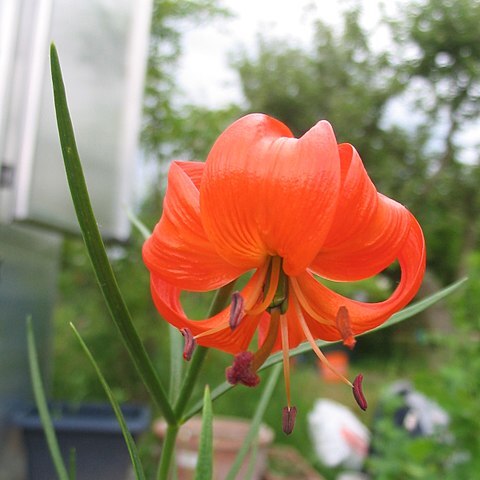A bulb plant and herb. The bulb is oval and 2-3 cm across. The scales are white. It grows 25-60 cm high and 15-20 cm wide. It roots from the stem. The leaves are scattered near the middle of the stem. The leaf blade is 3.5-9 cm long by 1.5-3 cm wide. The flowers are nodding. There can be 30 on a stem. They are vivid scarlet. Some have black spots at the centre. They are scented. The fruit is a capsule which is oblong and 2 cm long by 1.2-1.8 cm wide.

